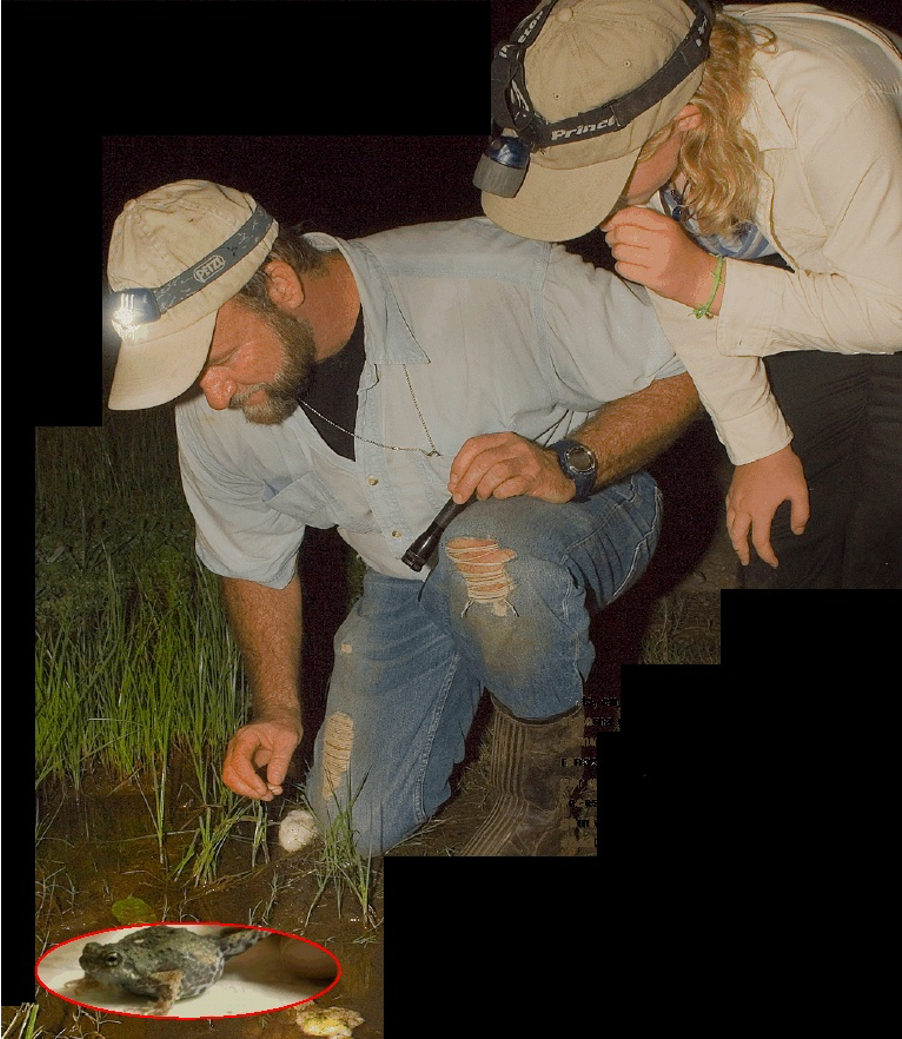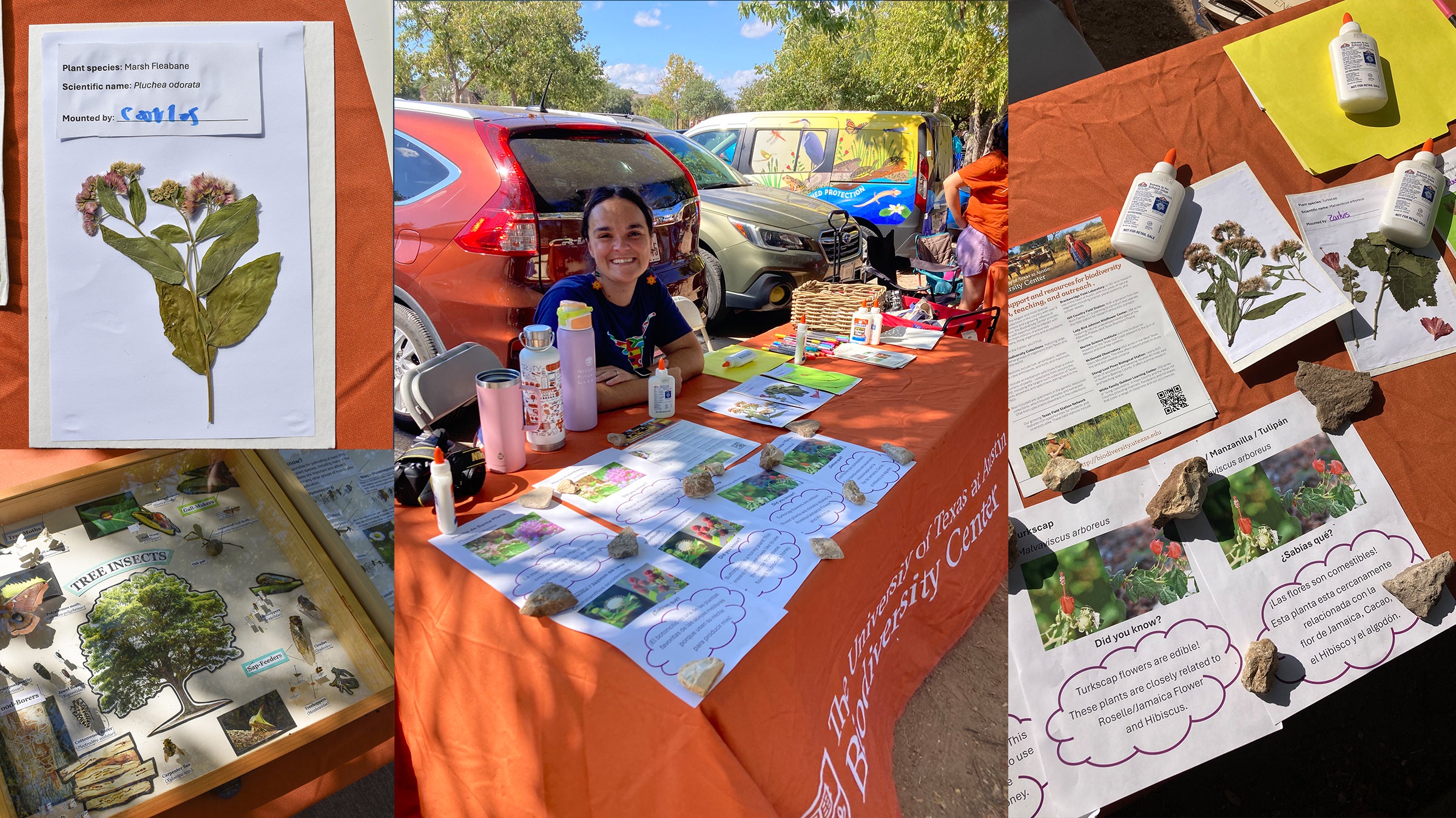History of UT Herpetology, Part 2: Mike Ryan's Work on Amphibian Communication

A male Túngara frog. (Photo: Ryan Taylor)
Herpetology at UT really kicked into gear when William Frank Blair arrived in 1946. Our first blog in this series looked at his influence on herpetology research and the Herpetology Collection. Here, we’ll review some of Blair’s work on frog communication, and how this focus carried into the present-day research of Mike Ryan.
In the early 1950s, Blair noticed that amphibian breeding calls played a significant role in mate selection. Blair found that the breeding calls of a given species were not the same across its range. He noted there were differences between populations where that species was the only one at a location versus when that same species lived among several at another location. Where a given species overlapped with others related to it, the calls of all species tended to vary more from each other. Why? This call variety would ensure that females could correctly pair up with males of the same species, reinforcing a mechanism of reproductive isolation.
This work Blair did on amphibian breeding calls was significant, and faculty that came to UT after Blair’s arrival would continue a deeper understanding of amphibian communication. “One frog expert has replaced another on the Zoology faculty since Dr. Michael Ryan stepped into the shoes of Dr. Frank Blair.” So opened a 1985 article on Ryan in published by UT’s Department of Zoology (now Integrative Biology). Ryan joined the UT faculty in the fall semester of 1984 where he currently teaches as Clark Hubbs Regents Professor in Zoology. Ryan studies animal behavior, with most of his work addressing sexual selection and communication in frogs and fish. As a behavioral evolutionist, he is especially interested in integrating an understanding of the mechanisms of communication involved in mate attraction with the evolutionary consequences of sexual selection.
Mike and his daughter Lucy in the field.
Ryan grew up in two ecologically-different areas: the Bronx in New York and later in a rural area of northwestern New Jersey. Both areas had resources that piqued his interest in the natural sciences; the Bronx Zoo and the American Museum of Natural History in NY, and the forests of his childhood New Jersey home. It was here he camped with siblings and friends, surrounded by the natural world, listening to the frog choruses at night. An influential teacher in a Catholic high school biology class gave him more focus, and he attended a state college with the goal to become a high school biology teacher himself. As Ryan explained in a 2006 interview with Current Biology: “There I became fascinated with the idea that the scientific process was accessible to mere mortals, and thrilled one could do this as a career.” This excitement would lead him to Rutgers University for his master’s degree, then to Cornell University for Ph.D. work in the late 1970s.
Cornell was an epicenter of the nascent field of Sociobiology, and sexual selection was one of its major concentrations. Ryan did his Ph.D. research here and spent nearly three years at the Smithsonian Tropical Research Institute’s field station on Barro Colorado Island. This is where he began what would be a long involvement in tropical biology and his work on the Túngara frog (Physalaemus pustulosus), a small Neotropical frog native to Middle and South America. While this species is now studied so much to be considered one of biology’s “model systems,” in the 1980s this tiny frog was a relatively obscure research choice. This frog was also what caused Ryan to abandon “extreme adaptationist thinking,” the idea in biology that an animal’s behavior always enhances its evolutionary fitness, but not considering that ancestry and anatomy can play constraining roles.

A Túngara frog becomes a meal. (Photo: Alex Baugh)
Ryan worked with ecologists Stan Rand and Merlin Tuttle, and with the latter revealed that the Túngara mating call also attracted predators like the fringe-lipped bat (Trachops cirrhosus). Ryan would complete a postdoctoral Miller Fellowship at the University of California at Berkeley where he added phylogenetic analyses to his studies of investigated sexual selection and communication of the Túngara frog, seeking to understand how the female’s mate choice among conspecific males influenced the evolution of the male’s courtship display: his vocalizations.
What does a Túngara frog mating call sound like? This short video by Ryan reveals the nocturnal mating call which he has humorously noted as being like something from a classic Star Wars movie.
The sounds you hear in this call are not always the same. As Ryan explains it, when the male is alone, he will rarely add that “chuck” noise that comes at the end of the initial “whine.” The male will add the “chuck” when he is in a group of other frogs. This gives him a better chance to grab the attention of a female.
It’s a delicate balance though. By advertising himself to the nocturnal world, the Túngara frog is not only telling females he’s available, he’s also letting predators know where he is. This is an example of opposing forces of natural and sexual selection, one of the foci of Ryan’s research, as well as other effects on the male frog’s mating call such as the female’s auditory system, environmental influences on calls, and the male’s morphology. Ryan’s work on the Túngara frog was published in The Túngara Frog: A Study of Sexual Selection and Communication (1985) and is a classic in the field.
Ryan also has researched the behaviors of other animals such as fish, salamanders, and birds. His approach always considers an integrative approach. “The future of animal behavior lies in its integration. The whole animal is at the intersection of those disciplines that concern processes inside the skin, such as genetics, development, and neuroscience, and those outside the skin, such as ecology, population biology, and evolution.”
As an educator and mentor, Ryan’s former grad students, interns, and post docs are plenty. Ryan is a Fellow of the American Academy of Arts and Sciences, the American Association of the Advancement of Science, and the Guggenheim Foundation.
Want to learn more? Start with the beginning blog on the beginning of UT Herpetology and the influence of William Frank Blair. Then check out our third blog on the history of UT Herpetology with this article on the "Lizard Man," the late Eric Pianka. Part four explores the establishment of the Texas Memorial Museum and current research in herpetology as of 2022.
Thanks to Mike Ryan and Travis Laduc for review and edits.
SOURCES
“A Taste for the Beautiful.” (webcast) Environmental Science Institute, University of Texas at Austin, November 30, 2018.
Berreby, David. “Evolving by Accident, Not Fitness.” The New York Times, Tuesday, October 14, 2003.
Current Biology, Vol. 16 No. 24
Kirkpatrick, Mark and Ryan, Michael. “Sexual Selection” Discovery: Research and Scholarship at the University of Texas at Austin, 1994.
“Evolutionary Biologist Ryan Joins Faculty,” Zoology Journal, 1985, Vol. 4.




